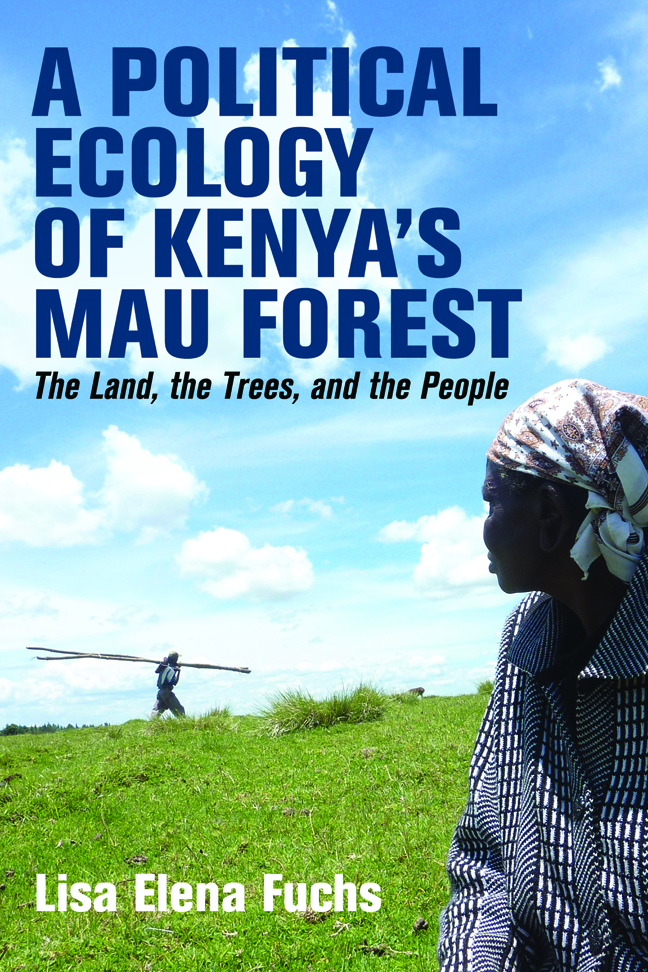Book contents
- Frontmatter
- Dedication
- Contents
- List of Illustrations
- List of Abbreviations
- Glossary
- Acknowledgements
- Introduction
- 1 The Politics of Conservation Aid: The Development State and ‘Saving the Mau’
- 2 Institutional Failure or Setting Priorities? The Continuation in Exploitation-focused Forest Management
- 3 The Political Economy of Land: Maintaining Control over Forest Land Allocation and Distribution
- 4 The Politics of Belonging and Exclusion in Response to Changes in the Eastern Mau: The Complex Definition of Legitimate Land and Resource Use
- Conclusions
- Appendix 1 Medicinal plants used and inventoried by survey respondents in the Eastern Mau in 2012–2013
- Appendix 2 Full overview of interview partners
- Bibliography
- Index
- Eastern Africa Series
- Frontmatter
- Dedication
- Contents
- List of Illustrations
- List of Abbreviations
- Glossary
- Acknowledgements
- Introduction
- 1 The Politics of Conservation Aid: The Development State and ‘Saving the Mau’
- 2 Institutional Failure or Setting Priorities? The Continuation in Exploitation-focused Forest Management
- 3 The Political Economy of Land: Maintaining Control over Forest Land Allocation and Distribution
- 4 The Politics of Belonging and Exclusion in Response to Changes in the Eastern Mau: The Complex Definition of Legitimate Land and Resource Use
- Conclusions
- Appendix 1 Medicinal plants used and inventoried by survey respondents in the Eastern Mau in 2012–2013
- Appendix 2 Full overview of interview partners
- Bibliography
- Index
- Eastern Africa Series
Summary
This book has analysed the drivers of the Mau Forest environmental crisis that are critical to understanding the destruction and dynamics preventing its restoration, which is widely appreciated as extraordinarily important for the country, the wider East African region and beyond. Its continuous degradation and destruction defy understanding. This book represents an attempt to analyse what has gone wrong and deconstruct the dynamics of non-protection. This final chapter draws together conclusions about responsibility for the destruction of the forest, local, national, and beyond, and suggests how its findings might point towards a better and more equitable solution to the depletion of habitat and livelihoods.
The sheer size of the Mau Forest and its location in the fertile and politically as well as economically critical Rift Valley region mean it is hardly possible to address the complexity of drivers of the ‘Mau crisis’ in totality. However, it is possible to make evidence-based assumptions based on my analysis of a specific area of the Mau Forest, which can contribute to understanding how the current ‘environmental crisis’ might be addressed. The empirical evidence generated in the Eastern Mau Forest underpins the analysis of the dynamics of non-protection of Kenya's most important forest.
The failure to ‘Save the Mau’ and the political ecology of its environmental crisis
Common approaches to explaining forest degradation and destruction often invoke people's poverty and their subsistence practices on the one hand, and some variation of agricultural expansion and/or unsustainable forest harvesting rates and hence some degree of ‘institutional failure’ on the other hand. While both explanations involve aspects influenced by the interests and actions of powerful actors, these approaches typically remain entirely apolitical. Despite several factors related to power dynamics being included in the FAO (2016) list of factors contributing to forest loss, for instance, their political nature is omitted by the way they are classified. Examples include agriculture, as well as encroachment and land grabbing being classified as agriculture-related; insecure tenure of forest land and unsustainable harvesting rates being classified as wood and forest-related; or settlement and industrial development, as well as poverty, being classified as social and governance-related. Hence, both the underlying political dynamics behind these supposed drivers and the implication that the political dimension of these factors has for possible solutions are neglected.
- Type
- Chapter
- Information
- A Political Ecology of Kenya's Mau ForestThe Land, the Trees, and the People, pp. 266 - 311Publisher: Boydell & BrewerPrint publication year: 2023

